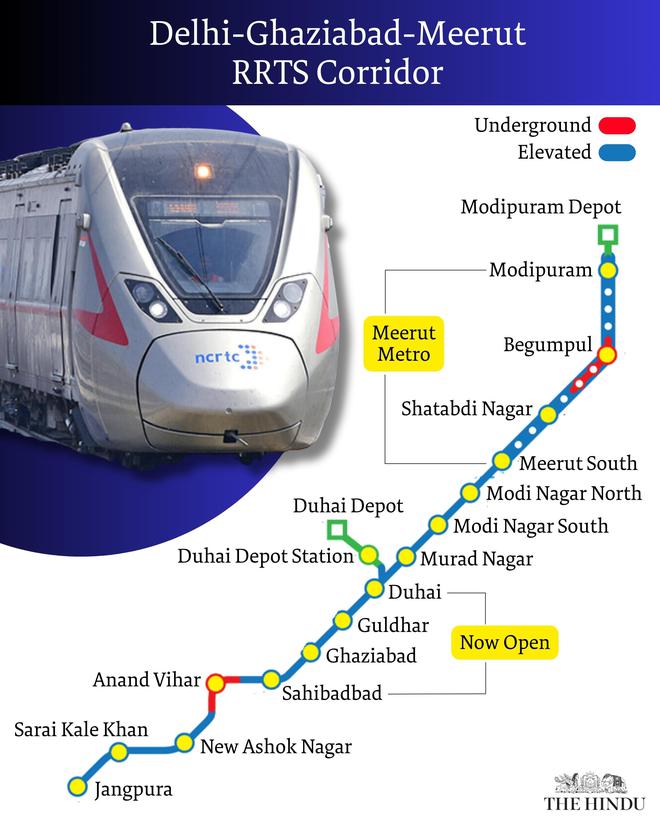Prime Minister Narendra Modi flagged off the country’s first Regional Rapid Transit System (RRTS) on Friday, calling the Namo Bharat train a glimpse of India’s promising future. Mr. Modi purchased a ticket and took a ride with schoolchildren on the completed 17-km stretch from Sahibabad to Duhai Depot in Uttar Pradesh; the full 82-km Delhi-Ghaziabad-Meerut corridor is scheduled to be functional by 2025.
“The Namo Bharat Train is defining the new journey of new India and its new resolutions. The Delhi-Meerut stretch is just the beginning, as the first phase will see many areas of Delhi, Uttar Pradesh, Haryana, and Rajasthan being connected. In the coming days, a similar system will be created in the other parts of the country to improve connectivity and create new avenues of employment,” Mr. Modi said, addressing a gathering after the event.
Pointing out that he had laid the foundation stone of the project four years ago, and had now come back to inaugurate it, Mr. Modi said that his government delivered what it had promised. “The rest of the project will be complete in one and a half years. At that time also, I will be present at your service,” Mr. Modi said, showing confidence that he would return for a third term as Prime Minister.

Delhi-Meerut in an hour
The RRTS is a new rail-based, semi-high-speed, high-frequency commuter transit system. With a design speed of 180 kmph, it is a regional development initiative, which is designed to provide high-speed trains for intercity commuting every 15 minutes, going up to a frequency of every five minutes when required. Developed at a cost of more than ₹30,000 crore, the train will allow a commuter to travel between Delhi and Meerut in less than an hour.
A total of eight RRTS corridors have been identified for development in the National Capital Region, of which three have been prioritised for implementation in the first phase: Delhi-Ghaziabad-Meerut; Delhi-Gurugram-SNB-Alwar; and Delhi-Panipat.
Officials in the Housing and Urban Affairs Ministry said that the RRTS being developed in the country is a state-of-the-art regional mobility solution, comparable to the best in the world. In line with the PM GatiShakti National Master Plan, the RRTS network will have extensive multi-modal integration with railway and Metro stations, and bus services.
Decade of transformation
The Prime Minister said that this third decade of the present century was the decade of transformation for Indian Railways, claiming that the trinity of Amrit Bharat, Vande Bharat and Namo Bharat would become a symbol of modernisation in the Railways. “I am not in the habit of small dreams and walking slowly. I want to give a guarantee to the young generation of today that by the end of this decade, you will find Indian trains second to none in the world,” Mr. Modi said.
Emphasising his government’s focus on improving civic infrastructure for better quality of life, Mr. Modi said that infrastructure like the Metro or Namo Bharat would give office-goers more time for their families, especially valuable for those with small children or elderly parents at home. For the youth, excellent infrastructure was a guarantee that big companies would come and set up industries nearby.
“With good infrastructure, many types of businesses start congregating at one place, which benefits everyone. For a working woman, infrastructure like the Metro or RRTS provides a strong sense of security. Not only does she reach her office safely, but her money is also saved,” Mr. Modi said.







